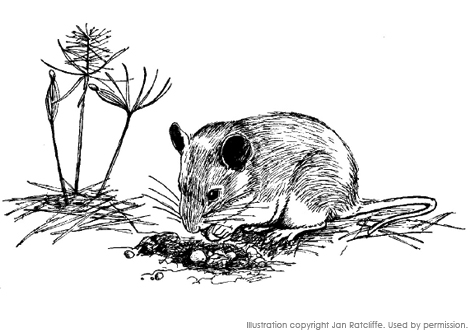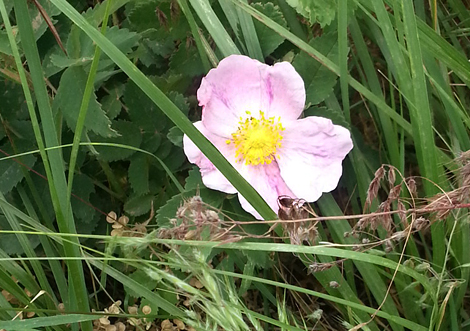by Marilyn Mueller
PLAN Jeffco functions as more than just a watchdog group. It observes meetings of the Open Space Advisory Committee, participates in subcommittees and issues groups, proposes and works for important acquisitions, provides advice to the Open Space Program, helps solve problems and keeps citizens informed of what is going on in their Open Space Program.
PLAN Jeffco, (PJ), operates thru its Board of Directors, which meets monthly. PJ schedules at least two major gatherings each year for the membership and interested citizens. Coming up in September will be “The Dinner with the Commissioners.” Held at Mt. Vernon Country Club, its aim is to bring together the Commissioners, The Open Space Staff, members of the Open Space Advisory Committee, PLAN Jeffco members and other citizens. In early spring, each year, there is the Annual meeting featuring a speaker or a workshop on topics of current interest.
A Candidates Forum will be held this fall. This meeting will feature the two candidates for County Commissioner, speaking and answering questions from the audience. See notices regarding the Commissioners Dinner and Candidates Forum in this issue.
Chairperson Margot Zallen and the PJ board have been busy responding to matters and events needing attention this year. Of major interest:
Trails – Continued involvement in meetings of the Open Space Trails Committee, whose purpose is to review use and conflict issues on our trails. Peter Morales (PJ Board Member) played a significant role in meetings and negotiations and actual decisions regarding the restructuring and repurposing of trails at Apex Park. Changes include directional traffic for bicyclists on odd-numbered calendar days over three segments of trail, construction of two new segments of trail and installation of trail features to add interest and moderate speed. For more information on specific trail changes and a new map of the Apex trail system, go to http://co.jefferson.co.us/jeffco/openspace_uploads/trail_use_changes_at_apex_park.pdf
Jefferson Parkway – This is the proposed extension of W470 on the north end of the Metro area, now called the Northwest Quadrant Toll Road. PLAN Jeffco has opposed this plan from the standpoint of the increased environmental impact to adjoining open space lands, the ensuing commercial and residential development which would substantially increase that impact, the fact that it would not solve the present traffic problems and would likely result in an increased tax burden on the residents of Jefferson County, to compensate for revenue short-falls.
County Master Plan Reviews – The County is revising their Master Plan and the segmented studies of the Mountain Backdrop areas in the North, Central, and South Plains areas. PJ Board members John Litz, Don Moore and Michelle Poolet have been active on this and any other present and long range planning subjects.
Staunton Park – This is a newly opened State Park, located in Jefferson County. PJ Board Member Vera Smith brought this to the Board’s attention when it was in the early planning stages, and PJ has been following the planning whenever public input has been possible. For more information on Staunton Park (and some fabulous pictures of the area) go to http://parks.state.co.us/Parks/Staunton/Pages/Staunton.aspx
Alex and Evelyn Rooney’s House – The house is located on county open space land and is part of a “hot button” area which includes the mountain backdrop, the Rooney Ranch and pastures, an historic Ute Indian council tree and assembly area, the Dinosaur Ridge Visitor Center, and the adjoining road over and along the hogback. An additional heavy impact from the East is the Three Dinos proposed plan for a large commercial and residential development. PJ board members Sally White and Ken Foelske have worked on proposing sealing and moth-balling Alex and Evelyn Rooney’s house until a study can create a Master Plan for the many uses, inter-entity relationships, and stakeholder involvement in this special area. For more information on the Rooney Ranch, go to http://www.rooneyranch.com/index.html
Identification of Desirable Additional Open Space Lands – PJ Board Member Greg Penkowsky is always on the hunt to identify additional open space land purchases and applicable sources of funding.
PLAN Jeffco is fortunate that our secretary, Betty Seeland, is also active in the League of Women Voters; this connection opens avenues of interaction between the two groups. John Litz, former PJ Chair, has been a member of the Open Space Advisory Committee for seventeen years and his presence gives PLAN Jeffco an important link to the Open Space staff and to the Commissioners.
This year’s Annual Meeting, held last March, featured two speakers who provided us with a full morning of entertaining yet relevant information. The meeting was co-sponsored with the League of Women Voters, the Audubon Society of Greater Denver, the Clear Creek Land Conservancy, the Rocky Mtn. Bird Observatory and the Colorado Mountain Club in Golden. The Mountain Club provided the use of their excellent auditorium.
The first speaker, Dyana Furmansky, introduced and reviewed her newly published book, “Rosalie Edge, Hawk of Mercy.” Dyana is a dynamic speaker; she writes about the truly important and pivotal contributions that Ms. Edge made. Starting in the early 1900’s, Rosalie Edge alerted the public to the need for conservation programs protecting wild life. At that time, eagles and hawks were considered desirable hunting game. Quoting from the book jacket: “In 1930, Edge formed the militant Emergency Conservation Committee, which not only railed against the complacency of the Bureau of Biological Survey, Audubon Society, U.S. Forest Service, and other stewardship organizations but also exposed the complicity of some in the squandering of our national heritage. Edge played key roles in the establishment of Olympic and Kings Canyon National Parks and the expansion of Yosemite and Sequoia National Parks.” Reading this book will definitely strengthen and motivate efforts for the protection and stewardship of our own natural environment. For additional information on Dyana and her book “Rosalie Edge, Hawk of Mercy”, go to http://www.dyanazfurmansky.com/Default.htm
Note: Dyana Furmansky was active in the 1972 election campaign that authorized the Jefferson County Open Space program.
The second speaker, Jason Beson, Special Monitoring Projects Coordinator for the Rocky Mountain Bird Observatory, brought with him some “Up Close and Personal” slides of raptors found in Colorado. Not only did these slides show how handsome and elegant these hawks and eagles are, but he pointed out identifying markings to look for when you are viewing them in the field. He also spoke about the raptor migration surveys and pointed out that one of the early spring observation periods takes place on Dinosaur Ridge, which is part of our own Dakota Hogback, west of Denver. During migration from wintering places in the South to breeding sites in the North and back again, these raptors are aided by gliding and flying with the thermal currents created from the temperature differences between the high Rockies and the adjoining lower plains. The RMBO is headquartered at Barr Lake. Excited by Jason’s pictures, we recommend finding some binoculars and going out to Barr Lake to look for hawks and eagles, and in addition, check out the many other birds in that location. For more information on the Rocky Mountain Bird Observatory, go to http://www.rmbo.org/
Some of the guiding principles which guide PLAN Jeffco interests and subsequent recommendations:
1. Protection of viewshed areas
2. Protection of watersheds
3. Protection of areas important for solitude
4. Protection of dark skies (for star gazing)
5. Protection of wildlife, wildlife migration corridors, riparian areas and other critical wildlife habitats and buffer zones
6. Protection of the mountain backdrop
7. Protection of bio-diversity and endangered vegetation habitat
8. Encourage the consolidation and additions to larger rather than fragmented parcels of open space
9. Encourage the “buying and holding” of open space for long term preservation rather than the need to develop each parcel of open space acquired by the County
10. Review and consider needed amendments to the County Master Plan to support the appropriate preservation of open space







 When long-time OSAC Chairperson Greg Stevinson stepped down from this post as OSAC Chair in 2009, prior to the end of his term, Jan Wilkins and Wayne Forman – also seasoned veterans of OSAC, stepped up to co-chair the Committee. Finding that they worked together so well, they requested that this ruling structure remain in place, but alas…bylaws are bylaws, and OSAC doesn’t allow for co-chairing. So Wayne stepped into the Chairperson position, and Jan is now a Co-Vice Chair with Ken Morfit.
When long-time OSAC Chairperson Greg Stevinson stepped down from this post as OSAC Chair in 2009, prior to the end of his term, Jan Wilkins and Wayne Forman – also seasoned veterans of OSAC, stepped up to co-chair the Committee. Finding that they worked together so well, they requested that this ruling structure remain in place, but alas…bylaws are bylaws, and OSAC doesn’t allow for co-chairing. So Wayne stepped into the Chairperson position, and Jan is now a Co-Vice Chair with Ken Morfit.

